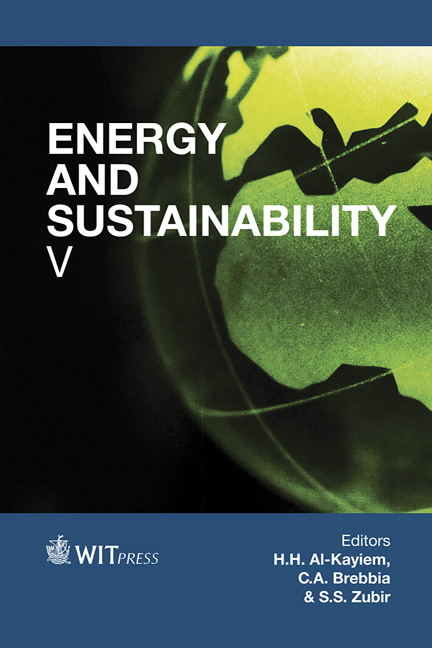Experimental Study Of Carbon Dioxide Separation With Nanoporous Ceramic Membranes
Price
Free (open access)
Transaction
Volume
186
Pages
9
Page Range
625 - 633
Published
2015
Size
2,191 kb
Paper DOI
10.2495/ESUS140551
Copyright
WIT Press
Author(s)
M. N. Kajama, N. C. Nwogu, E. Gobina
Abstract
This paper examines carbon dioxide (CO2) separation from natural gas, mainly methane, through a 15 nm alumina tubular ceramic membrane before and after silica modification. A laboratory scale of tubular silica membrane with a permeable length of 348 mm, I.D and O.D of 7 and 10 mm respectively was used in this experiment. Scanning electron microscopy (SEM) i.e. inner surface, outer surface and cross sectional area of the membrane were analyzed in this experiment. Single gas permeation of helium, methane, nitrogen, argon and carbon dioxide were determined at permeation temperature range between 25°C and 100°C and feed gauge pressure of 0.05 to 1.0 barg. Helium recorded the highest flow rate (0.3745 l/min) while carbon dioxide recorded the least flow rate (0.1351 l/min) at 0.4 barg and 25°C before silica modification. After silica modification, the flow rate of CO2 rose to 3.1180 l/min at 1.0 barg whereas CH4 recorded 2.1200 l/min at the same gauge pressure. Temperature variation described the applicability of Knudsen diffusion. A combination of viscous, surface and Knudsen diffusion mechanisms were obtained throughout the silica modification experiment.
Keywords
nanoporous ceramic membranes, gas permeation, permeation temperature, dip-coating, carbon dioxide removal, surface flow, natural gas separation





